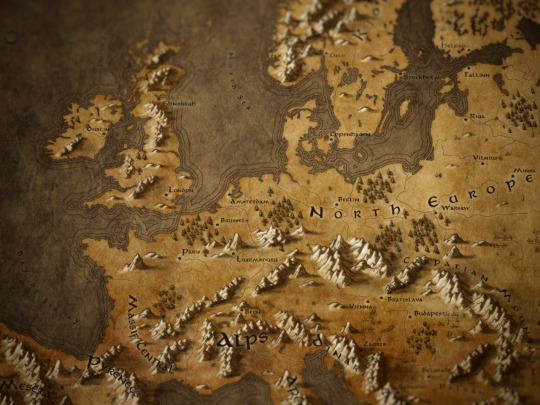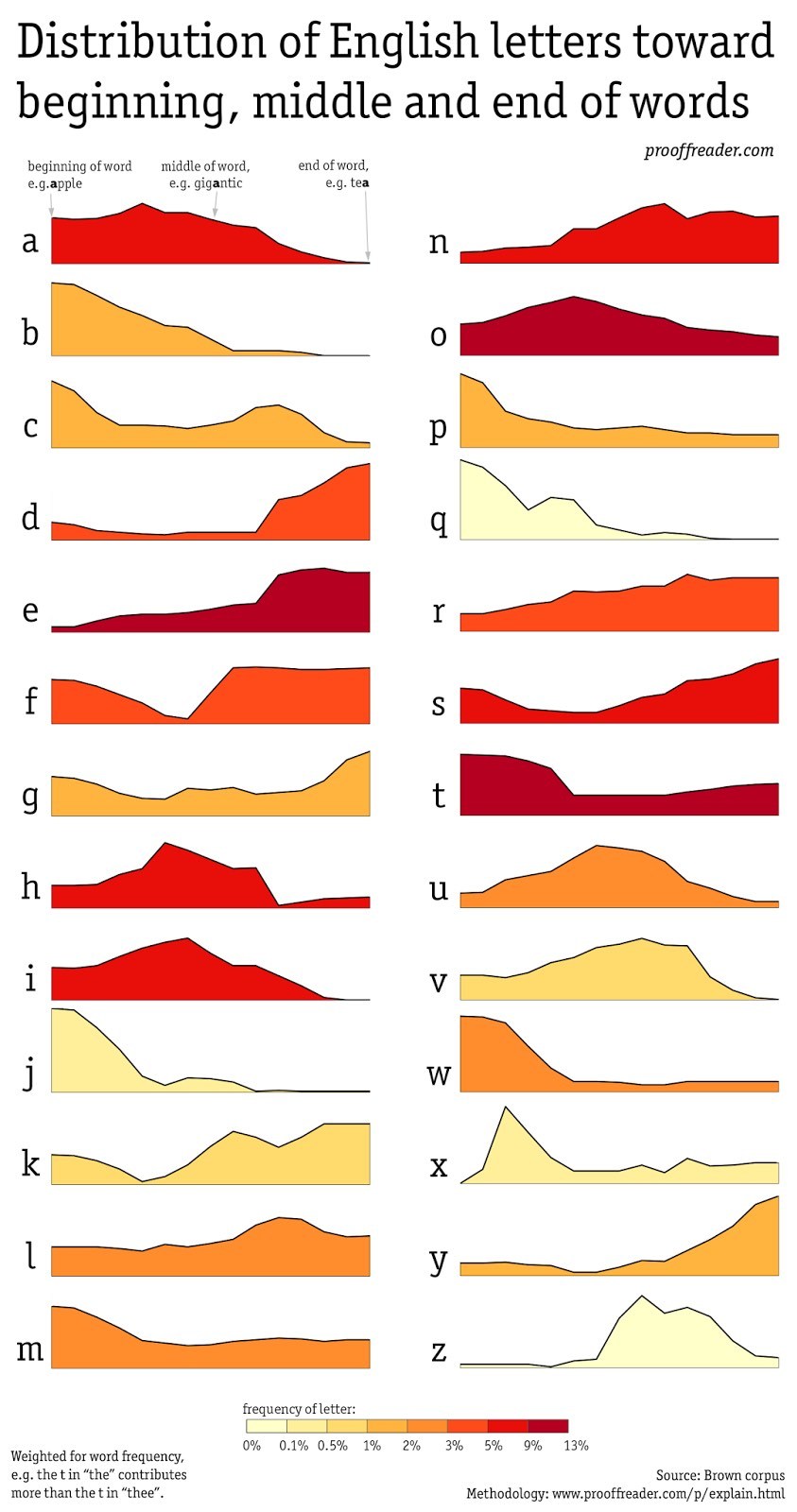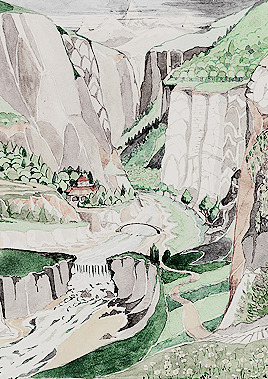Text
Imitating generative AI videos

English added by me :)
9K notes
·
View notes
Text
So You've Finally Switched to Firefox: a Brief Guide to a Some Very Useful Add-Ons.
This post is inspired by two things, the first being the announcement by Google that the long delayed Manifest V3 which will kill robust adblocking will finally roll out in June 2024, and the second, a post written by @sexhaver in response to a question as to what adblockers and extensions they use. It's a very good post with some A+ information, worth checking out.
I love Firefox, I love the degree of customization it offers me as a user. I love how it just works. I love the built in security features like DNS over HTTPS, and I love just how many excellent add-ons are available. It is a better browser than Chrome in every respect, and of the many Chromium based browsers out there, only Vivaldi comes close.
There are probably many people out there who are considering switching over to Firefox but are maybe putting it off because they've got Chrome set up the way they like it with the extensions they want, and doing all that again for Firefox seems like a chore. The Firefox Add-on directory is less expansive than the Chrome Web Store (which in recent years has become overrun with garbage extensions that range from useless to active malware), but there is still a lot of stuff to sift through. That's where this short guide comes in.
I'm presently running 33 add-ons for Firefox and have a number of others installed but disabled. I've used many others. These are my picks, the ones that I consider essential, useful, or in some cases just fun.
Adblocking/Privacy/Security:
uBlock Origin: The single best adblocker available. If you're a power user there are custom lists and scripts you can find to augment it.
Privacy Badger: Not strictly necessary if you're also running uBlock, but it does catch a few trackers uBlock doesn't and replaces potentially useful trackers like comment boxes with click-to-activate placeholders.
Decentraleyes: A supplementary tool meant to run alongside uBlock, prevents certain sites from breaking when tracker requests are denied by serving local bundled files as replacement.
NoScript: The nuclear option for blocking trackers, ads, and even individual elements. Operates from a "trust no one" standpoint, you will need to manually enable elements yourself. Not recommended for casual users, but a fantastic tool for the power user.
Webmail Ad Blocker: The first of many webmail related add-ons from Jason Saward I will be recommending. Removes all advertising from webmail services like Gmail or Yahoo Mail.
Popup Blocker (Strict): Strictly blocks ALL pop up/new tab/new window requests from all website by default unless you manually allow it.
SponsorBlock: Not a fan of listening to your favourite YouTuber read advertisements for shitty products like Raycons or BetterHelp? This skips them automatically.
AdNauseam: I don't use this one but some people prefer it. Rather than straight up blocking ads and trackers, it obfuscates data by injecting noise into the tracker surveillance infrastructure. It clicks EVERY ad, making your data profile incomprehensible.
User-Agent Switcher: Allows you to spoof websites attempting to gather information by altering your browser profile. Want to browse mobile sites on desktop? This allows you to do it.
Bitwarden: Bitwarden has been my choice of password manager since LastPass sold out and made their free tier useless. If you're not using a password manager, why not? All of my passwords look like this: $NHhaduC*q3VhuhD&scICLKjvM4rZK5^c7ID%q5HVJ3@gny I don't know a single one of them and I use a passphrase as a master password supplemented by two-factor-authentication. Everything is filled in automatically. It is the only way to live.
Proton Pass: An open source free password manager from the creators of Proton Mail. I've been considering moving over to it from Bitwarden myself.
Webmail/Google Drive:
Checker Plus for Gmail: Provides desktop notifications for Gmail accounts, supports managing multiple accounts, allows you to check your mail, read, mark as read or delete e-mails at a glance in a pop-up window. An absolutely fabulous add-on from Jason Saward.
Checker Plus for Google Drive: Does for your Google Drive what Checker Plus for Gmail does for your Gmail.
Checker Plus for Google Calendar: The same as the above two only this time for your Google Calendar.
Firefox Relay: An add-on that allows you to generate aliases that forward to your real e-mail address.
Accessibility:
Dark Reader: Gives every page on the internet a customizable Dark Mode for easier reading and eye protection.
Read Aloud: A text to speech add-on that reads pages with the press of a button.
Zoom Page WE: Provides the ability to zoom in on pages in multiple ways: text zoom, full page zoom, auto-fit etc.
Mobile Dyslexic: Not one I use, but I know people who swear by it. Replaces all fonts with a dyslexia friendly type face.
Utility:
ClearURLs: Automatically removes tracking data from URLs.
History Cleaner: Automatically deletes browser history older than a set number of days.
Feedbro RSS Feed Reader: A full standalone reader in your browser, take control of your feed and start using RSS feeds again.
Video Download Helper: A great tool for downloading video files from websites.
Snap Link Plus: Fan of Wikipedia binge holes? Snap Link allows to drag select multiple hyperlink and automatically open all of them in new tabs.
Copy PlainText: Copy any text without formatting.
EPUBReader: Read .epub files from within a browser window.
Tab Stash: A no mess, no fuss way to organize groups of tabs as bookmarks. I use it as a temporary bookmark tool, saving sessions or groups of tabs into "to read" folders.
Tampermonkey/Violentmonkey: Managers for installing and running custom user scripts. Find user scripts on OpenUserJS or Greasy Fork, there's an entire galaxy out there of ingenious and weird custom user scripts out there, go discover it.
Browsing & Searching:
Speed Dial 2: A new tab add-on that gives you easy access to your favourite sites.
Unpaywall: Whenever you come across a scholarly article behind a paywall, this add-on will search through all the free databases for an accessible and non-paywalled version of the text.
Web Archives: Come across a dead page? This add-on gives you a quick way to search for cached versions of the page on the Wayback Machine, Google Cache, Archive.is and others.
Bypass Paywalls: Automatically bypasses the paywalls of major websites like those for the New York Times, New Yorker, the Financial Times, Wired, etc.
Simple Translate: Simple one-click translation of web pages powered by Google Translate.
Search by Image: Reverse search any image via several different search engines: Google Image, TinEye, Yandex, Bing, etc.
Website Specific:
PocketTube: Do you subscribe to too many YouTube channels? Would you like a way to organize them? This is your answer.
Enhancer for Youtube: Provides a suite of options that make using YouTube more pleasant: volume boost, theatre mode, forced quality settings, playback speed and mouse wheel volume control.
Augmented Steam: Improves the experience of using Steam in a browser, see price histories of games, take notes on your wishlist, make wish listed games and new DLC for games you own appear more visible, etc.
Return YouTube Dislikes: Does exactly what it says on the package.
BlueBlocker: Hate seeing the absolute dimmest individuals on the planet have their replies catapulted to the top of the feed because they're desperate to suck off daddy Elon sloppy style? This is for you, it automatically blocks all Blue Checks on Twitter. I've used it to block a cumulative 34,000 Blue Checks.
Batchcamp: Allows for batch downloading on Bandcamp.
XKit Rewritten: If you're on Tumblr and you're not using whichever version of XKit is currently available, I honestly don't know what to say to you. This newest version isn't as fully featured as the old XKit of the golden age, but it's been rewritten from the ground up for speed and utility.
Social Fixer for Facebook: I once accidentally visited Facebook without this add-on enabled and was immediately greeted by the worst, mind annihilating content slop I had ever had the misfortune to come across. Videos titled "he wanted her to get lip fillers and she said no so he had bees sting her lips", and AI photos of broccoli Jesus with 6000 comments all saying "wow". Once I turned it on it was just stuff my dad had posted and updates from the Radio War Nerd group.
BetterTTV: Makes Twitch slightly more bearable.
Well I think that's everything. You don't have to install everything here, or even half of it, but there you go, it's a start.
51K notes
·
View notes
Text
5K notes
·
View notes
Text
the transformer ... “explained”?
Okay, here’s my promised post on the Transformer architecture. (Tagging @sinesalvatorem as requested)
The Transformer architecture is the hot new thing in machine learning, especially in NLP. In the course of roughly a year, the Transformer has given us things like:
GPT-2, everyone’s new favorite writer-bot, with whose work I am sure you are familiar
GPT (the first one) and its superior successor, BERT, which can achieve state-of-the-art results with unprecedented data efficiency on numerous language understanding tasks with almost no hyperparameter tuning – in concrete terms, this means “something that took me, nostalgebraist, a month to do in 2018 now takes me 30 minutes, and the results are better”
AlphaStar?? There’s still no paper on it yet, AFIAK, but the blog post says it has a Transformer as one of its components
This thing is super good. It honestly spooks me quite a bit, and I’m not usually spooked by new neural net stuff.
However, it doesn’t seem like an intuitive understanding of the Transformer has been disseminated yet – not the way that an intuitive understanding of CNNs and RNNs have.
The original paper introducing it, “Attention Is All You Need,” is suboptimal for intuitive understanding in many ways, but typically people who use the Transformer just cite/link to it and call it a day. The closest thing to an intuitive explainer than I know of is “The Illustrated Transformer,” but IMO it’s too light on intuition and too heavy on near-pseudocode (including stuff like “now you divide by 8,” as the third of six enumerated “steps” which themselves only cover part of the whole computation!).
This is a shame, because once you hack through all the surrounding weeds, the basic idea of the Transformer is really simple. This post is my attempt at a explainer.
I’m going to take a “historical” route where I go through some other, mostly older architectural patterns first, to put it in context; hopefully it’ll be useful to people who are new to this stuff, while also not too tiresome to those who aren’t.
Keep reading
216 notes
·
View notes
Text
Worldbuilding, or What Fantasy Fiction Taught Me About Archaeology

By Adrián Maldonado
This post is an interim report. I have found that reading about the history of the fantasy genre has taught me something important about the history of archaeology itself. In my last post, I showed that Robert E Howard, creator of Conan the Barbarian, was building his Hyborian Age around the same time as JRR Tolkien was conceiving Middle-earth. For all their interest in the ancient past, neither author knew much about archaeology, a discipline that was still just gaining legitimacy in the 1920s and 30s. And yet their writings have much in common with the archaeological stories of European prehistory emerging at the time.
In other words, fantasy and archaeology grew out of the same origin stories, and they both carry similar baggage as a result. Let’s poke around in that dirty laundry for a bit.
Keep reading
19 notes
·
View notes
Text
Morning on Mars






6 Martian sunrises, as seen by the HiRISE orbiter. Once again, not artist’s renditions.
99K notes
·
View notes
Photo










Today Google celebrates the 79th birthday of the costume designer Eiko Ishioka, untimely passed in 2012.
The costumes included in the animated doodle are from The Fall (2006) by Tarsem Singh.
1. Black costume with golden frogs and blue silk kimono-like jacket seen on Roy Walker (Lee Pace)
2. Roy’s red mask
3. White dress with padded sleeves seen on Sister Evelyn (Justine Waddell), worn with a beaded fringed headpiece
4. Yellow coat with red flames seen on Luigi (Robin Smith)
5. Red silk dress with lotus embroidery and fan-shaped headpiece seen on Evelyn
5K notes
·
View notes
Text
New D&D magic spells, designed by neural network
I’ve trained this open-source neural network framework on a variety of datasets, including recipes, Pokemon, knock-knock jokes, and pick up lines.
Here’s the latest: a list of 365 different spells you can cast in Dungeons and Dragons.
It’s a really small dataset, actually - so small that in almost no time at all, it learned to reproduce the original input data verbatim, in order. But by setting the “temperature” flag to a really high value (i.e. it has a higher chance of NOT going with its best guess for the next character in the phrase), I can at least induce spelling mistakes. Then the neural network has to try to recover from these, with often entertaining results.
I give you: D&D magic spells, designed by neural network
Moss Healing Word Hold Mouse Barking Sphere Heat on Farm True Steake Finger of Enftebtemang Fomend’s Beating Sphere Purping Lightsin Farming Wrathful Hound Q’s Invisibility Cow of Auraly Mind Blark Stone Share Puijune Magic Furs Grove of Plants Conjure Velemert Vicious Markers End Wall Mous of Farts Cursing Gland Growth
10K notes
·
View notes
Link
“Any intelligent fool can make things bigger, more complex, and more violent. It takes a touch of genius — and a lot of courage — to move in the opposite direction.”
“Imagination is more important than knowledge.”
“Gravitation is not responsible for people falling in love.”
“The hardest thing in the world to understand is the income tax.”
“Reality is merely an illusion, albeit a very persistent one.”
“The only real valuable thing is intuition.”
“A person starts to live when he can live outside himself.”
“Weakness of attitude becomes weakness of character.”
“I never think of the future. It comes soon enough.”
“The eternal mystery of the world is its comprehensibility.”
“Sometimes one pays most for the things one gets for nothing.”
“Anyone who has never made a mistake has never tried anything new.”
“Great spirits have often encountered violent opposition from weak minds.”
“Everything should be made as simple as possible, but not simpler.”
“Common sense is the collection of prejudices acquired by age eighteen.”
“Science is a wonderful thing if one does not have to earn one’s living at it.”
“The secret to creativity is knowing how to hide your sources.”
“The only thing that interferes with my learning is my education.”
“The whole of science is nothing more than a refinement of everyday thinking.”
“Technological progress is like an axe in the hands of a pathological criminal.”
“Peace cannot be kept by force. It can only be achieved by understanding.”
“The most incomprehensible thing about the world is that it is comprehensible.”
“We can’t solve problems by using the same kind of thinking we used when we created them.”
“Education is what remains after one has forgotten everything he learned in school.”
“The important thing is not to stop questioning. Curiosity has its own reason for existing.”
“Do not worry about your difficulties in Mathematics. I can assure you mine are still greater.”
“Equations are more important to me, because politics is for the present, but an equation is something for eternity.”
“If A is a success in life, then A equals x plus y plus z. Work is x; y is play; and z is keeping your mouth shut.”
“Two things are infinite: the universe and human stupidity; and I’m not sure about the the universe.”
“As far as the laws of mathematics refer to reality, they are not certain, as far as they are certain, they do not refer to reality.”
“Whoever undertakes to set himself up as a judge of Truth and Knowledge is shipwrecked by the laughter of the gods.”
“I know not with what weapons World War III will be fought, but World War IV will be fought with sticks and stones.”
“In order to form an immaculate member of a flock of sheep one must, above all, be a sheep.”
“The fear of death is the most unjustified of all fears, for there’s no risk of accident for someone who’s dead.”
“Too many of us look upon Americans as dollar chasers. This is a cruel libel, even if it is reiterated thoughtlessly by the Americans themselves.”
“Heroism on command, senseless violence, and all the loathsome nonsense that goes by the name of patriotism — how passionately I hate them!”
“No, this trick won’t work…How on earth are you ever going to explain in terms of chemistry and physics so important a biological phenomenon as first love?”
“My religion consists of a humble admiration of the illimitable superior spirit who reveals himself in the slight details we are able to perceive with our frail and feeble mind.”
“Yes, we have to divide up our time like that, between our politics and our equations. But to me our equations are far more important, for politics are only a matter of present concern. A mathematical equation stands forever.”
“The release of atom power has changed everything except our way of thinking…the solution to this problem lies in the heart of mankind. If only I had known, I should have become a watchmaker.”
“Great spirits have always found violent opposition from mediocrities. The latter cannot understand it when a man does not thoughtlessly submit to hereditary prejudices but honestly and courageously uses his intelligence.”
“The most beautiful thing we can experience is the mysterious. It is the source of all true art and all science. He to whom this emotion is a stranger, who can no longer pause to wonder and stand rapt in awe, is as good as dead: his eyes are closed.”
“Now he has departed from this strange world a little ahead of me. That means nothing. People like us, who believe in physics, know that the distinction between past, present, and future is only a stubbornly persistent illusion.”
“You see, wire telegraph is a kind of a very, very long cat. You pull his tail in New York and his head is meowing in Los Angeles. Do you understand this? And radio operates exactly the same way: you send signals here, they receive them there. The only difference is that there is no cat.”
“One had to cram all this stuff into one’s mind for the examinations, whether one liked it or not. This coercion had such a deterring effect on me that, after I had passed the final examination, I found the consideration of any scientific problems distasteful to me for an entire year.”
“…one of the strongest motives that lead men to art and science is escape from everyday life with its painful crudity and hopeless dreariness, from the fetters of one’s own ever-shifting desires. A finely tempered nature longs to escape from the personal life into the world of objective perception and thought.”
“He who joyfully marches to music rank and file, has already earned my contempt. He has been given a large brain by mistake, since for him the spinal cord would surely suffice. This disgrace to civilization should be done away with at once. Heroism at command, how violently I hate all this, how despicable and ignoble war is; I would rather be torn to shreds than be a part of so base an action. It is my conviction that killing under the cloak of war is nothing but an act of murder.”
“A human being is a part of a whole, called by us ‘universe’, a part limited in time and space. He experiences himself, his thoughts and feelings as something separated from the rest… a kind of optical delusion of his consciousness. This delusion is a kind of prison for us, restricting us to our personal desires and to affection for a few persons nearest to us. Our task must be to free ourselves from this prison by widening our circle of compassion to embrace all living creatures and the whole of nature in its beauty.”
“Not everything that counts can be counted, and not everything that can be counted counts.”
Compiled by: Kevin Harris 1995

Einstein on the Beach
1K notes
·
View notes
Text
A History of the Whills
“First comes the day Then comes the night. After the darkness Shines through the light. The difference, they say, Is only made right By the resolving of gray Through refined Jedi sight.”
—Journal of the Whills, 7:477
Thus opens The Force Awakens novelization, written by Alan Dean Foster, and the first mention of the Whills in new canon. A year ago i did a quick recap of the history of the Whills. Then recently we learned that Jedha was home to a Temple of the Whills and I thought, time for a redux, so here it is; as complete an history of the Whills in Star Wars as I can make it, spanning 1973 to 2016.
(1) Prehistory
It’s 1973. George Lucas is starting to work on what will become Star Wars. That’s the commonly accepted bit - how these beginnings went is more disputed. I’ll go with Rinzler’s 2007 Making Of book as my main source, since he’s had access to archives others haven’t.
When it comes to the Whills, first appearance is generally considered to be in two pages of early notes, titled Journal of the Whills, and divided in “I” and “II”.

this is the story of Mace Windy, a revered Jedi-Bendu of Ophuchi, as related to us by C. J. Thorpe, padawaan learner to the famed Jedi.
From The Making of Star Wars by Rinzler, enhanced ebook edition
In my dreams, those first notes have been wholly published, but in reality i haven’t found them. In any case, it seems there were no further references to the Whills in there.
Keep reading
84 notes
·
View notes
Quote
Somewhere in the universe two black holes collide — as heavy as stars, as small as cities…
One year ago today, scientists announced the detection of gravitational waves – one of the most significant discoveries in the whole of history. Astrophysicist Janna Levin tells the remarkable story of this triumph of the human spirit a century of the making. (via explore-blog)
156 notes
·
View notes
Link
This week, “Let’s Learn Náhuatl” (Ma tiwelikan nawatl), was officially released, an app created to teach and preserve the indigenous Mexican Nahuatl language.
“In a sub-conscious way, you’ll know some Náhuatl , you’ll have heard the greetings, numbers, some verbs, maybe the animals, body parts, types of maize or scared places that govern the Nahuatl world.”
The project is the result of a collaboration between Manuvo, the National Institute of Indigenous Languages, and the Laboratory of Digital Citizenship, and offers a playful experience for those interested in learning Náhuatl words and expressions (which originated in Acatlán, Guerrero).
The graphics were designed by the design collective Metzican who created all the visuals that accompany the application. They highlight the nuances between the various Mexican communities whilst carefully avoiding clichés.



Presently in Mexico there are around 1,586,884 speakers of náhuatl or mexikatl (‘mexicano’) living across the country. The aim of this initiative is to utilise technology as a mechanism to “disseminate and generate interest in the indigenous languages, the community’s way of living and the cosmology of the indigenous villages in Mexico”.
Also in development is an app to learn purépecha, (the language spoken mainly in the northwestern region of Michoacan) which will similarly represent the identity of the village.
The app “Let’s Learn Náhuatl” is available to download for free on IOS and Android. For more info, check out Manuvo.
14K notes
·
View notes
Text
A Handy Guide to the Archaeology of Rogue One: A Star Wars Story

By Adrián Maldonado
Take a drink if you’ve heard this one before, but for me, one of the things which set Rogue One apart from the previous Star Wars films was its archaeological sensibility.
While The Force Awakens had plenty of ruins, and featured one iconic artefact from the original trilogy, there was no real sense that history extended beyond the events of Episodes IV-VI. Yet with Rogue One, turn any stone and you’ll see the remnants of a past so deep that even its creators have only glimpsed it. The film also draws from the prehistory of George Lucas’ own writing, going back to his early journals from 1973. As if you needed another excuse to re-watch Rogue One, here is a handy guide to the archaeological items and motifs you may have missed. And do I really need to warn about spoilers? I’m surprised I haven’t spoiled anything already. Valar morghulis.
Jyn Erso’s kyber crystal pendant

It’s no lightsaber, but it’ll have to do (source)
The first proper artefact we see in the film is a kyber crystal pendant given to the young Jyn Erso by her mother Lyra. There is no indication of how Lyra came into possession of one, or how long it has been a family heirloom; adding to its mystery, it is apparently inscribed in Aurabesh.
To get answers, I had to turn to the awkwardly titled Star Wars: Rogue One: The Ultimate Visual Guide (UVG) by Pablo Hidalgo, Lucasfilm’s story czar. Published for kids and incurable nerds, this volume provides canonical explanations for the tiniest details of costume, prop and set design for the film. Here we are given Lyra’s fascinating backstory, revealing she met her future husband Galen Erso while surveying cave systems on distant planets researching kyber crystals. She is also a keen student of Jedi theology, and the red sash she wears is apparently a token of her devotion to the Force. In fact, in an early version of the script, she was a Jedi herself. The crystal she wore around her neck came from Galen’s research collection. It is not clear whether it was at this point already inscribed.

Beats a rabbit’s foot, thought young Jyn (source)
Nerds are already well aware that kyber crystals are the mysterious semi-divine materials which power Jedi lightsabers, and as the film makes clear, also power the Death Star’s superlaser. They are very much the Star Wars saga’s Rings of Power, in that they are also animate objects, receptive to the will of the Force and exerting effects on the Force-sensitive. Partially organic, they vibrate and emit harmonics, allowing someone like Chirrut Îmwe with super-hearing to use them to his advantage. This is how he is able to perceive Jyn’s kyber pendant in the busy marketplace on Jedha, and it turns out Chirrut also has a sliver of kyber of his own in the metal end of this staff.
Kyber crystals thus form a clever material metaphor for the Jedi; worn or carried by two of the main characters, they are present throughout the film but only rarely glimpsed, like medieval saint’s relics. Rogue One is famously the first Star Wars film to not revolve around Jedi or Sith characters, but the Force is strong in this episode. The Jedi are not physically present, but from Lyra Erso to Chirrut, the film is full of people who are in awe of the Force, or bent on using its secrets to control the galaxy. The saga is quickly becoming less a hero’s journey and more a hagiography of canonised Jedi saints.
Yavin 4’s Great Temple

The not-quite-Mayan pyramids of Rogue One (source)
The appearance of the Rebel Alliance headquarters on Yavin 4 is pure nerd catnip, taking us into the pyramids glimpsed so briefly from a distance in A New Hope. It’s not just the Empire ransacking ancient monuments during this Galactic Civil War: the Rebel Alliance ensconced themselves in abandoned pyramids on a distant forest planet. They appear to have gutted out the ground levels of these monuments for use as hangars for their space fleet. Further research reveals these are the 5000 year-old temples of the Massassi, an extinct people with a tragic history. We don’t know much more about them, not that it matters much in the long term as they were evacuated immediately after the Battle of Yavin which follows soon after the events of Rogue One. Interestingly, Yavin 4 was not completely abandoned, as a small colony was set up there after the Battle of Endor, and this happens to be where our new favourite flyboy Poe Dameron was born. Given the impact of the events and historical figures that passed through here, I hope the Galactic equivalent of UNESCO doesn’t try to undo the modifications on these temples wrought by the Rebels, as it is a crucial part of the long-term importance of this site.

The actual Mayan pyramids of A New Hope (source)
Oh, and these pyramids are of course inspired by the real-world Mayan pyramids of Tikal in modern-day Guatemala, where George Lucas sent a crew to film for a few landscape views back in 1977. Interior shots were all studio creations, and Rogue One’s temples show some artistic license taken by the designers this time around to make them a bit Star Warsier more than Mayan, but in wide shots they are unmistakeable Earthling archaeology.
Jedha and the Whills

We’re gonna need a longer extension cord (source)
The centrality of the Force to this film is shown in the centrality of Jedha. Jedha is one of the galaxy’s main sources of naturally-occurring kyber crystals. It is also the main pilgrimage destination of worshippers of the Force, as it claims to be the site of the first Jedi temple. According to the UVG, the deserts are also dotted with ancient ruins and remnants of some of the oldest civilisations in the galaxy. The parallels with modern-day Mecca and Jerusalem are intentional, according to another nerdy companion volume, The Art of Rogue One: A Star Wars Story: “To better imbue the setting with a sense of scale and significance, artists found inspiration in human history”. As designer Doug Chiang puts it, “[we] don’t treat these movies like science fiction, but more like historical films.”
We see Jedha as a city under occupation, an Imperial Star Destroyer parked menacingly above, Imperial tanks patrolling the streets, and the attendant violence from rebel insurgents. The sacred places, including the central Temple of the Whills, have been looted for their precious kyber, which is now destined to fuel the Galaxy’s deadliest weapon. This would be like stealing the Black Stone of Mecca to power a nuclear warhead.
The involvement of Chirrut Îmwe and Baze Malbus is a direct result of the Empire’s meddling in Jedha. They were both formerly Guardians of the Whills, an order of warrior monks tasked with protecting the Temple, but now find themselves out of a job as the temple was decommissioned. These events may also have galvanized the defection of Imperial pilot Bodhi Rook, a native of Jedha. It seems in hindsight that the desecration of this holy place was a fatal overreach for the Empire.

Sometimes there is such a thing as too much statue (source)
Another way of looking at it is that the near-extermination of the Jedi 19 years previously had already resulted in a demotion of the Jedi from a core pillar of the Galactic Republic to an underground cult. Pillaging the Temple of the Whills would not have been seen as a desecration but a consolidation of Imperial rule. This turning away from cultural heritage is embodied by the fallen Jedi statue seen being slowly engulfed by the sands of Jedha. What other galactic heritage had been lost in the rise of the Empire? Along with the first Jedi Temple (or oldest surviving after Jedha?) glimpsed at the end of The Force Awakens, the addition of Jedha to the Star Wars universe shows that our generation’s post-Lucas saga is more interested in exploring the roots of the religion of the Jedi than their heroic exploits.
So what on earth is a Whill? If the ancient Temple and fallen statue are links to deep prehistory within the Star Wars universe, the Whills are Rogue One’s way of reaching into the prehistory of Star Wars itself. George Lucas’ first draft of what would eventually become Star Wars was a couple of pages of notes scribbled down in 1973 under the heading ‘Journal of the Whills’. It seems the original idea was for the stories of the Jedi to have reached us through a sort of intergalactic Red Book of Westmarch, but this was eventually abandoned. Lucas intended for the Whills to remain in the universe as a secretive cult of the Force, but the word has never been spoken on screen until now. It cements Rogue One not as an outlier to the original trilogy, but a sort of exegetical commentary on a text that has since become sacred.
Saw Gerrera’s Hideout

Sometimes there is such a thing as too much bass (source)
Just down the road from the Holy City of Jedha is a natural steeple of rock rising up from the desert which houses the secret headquarters of the extremist rebel Saw Gerrera. We only get a few glimpses of the structure but it appears to be a pretty ostentatious hiding place, in a towering Petra-like rock-cut temple approached by an avenue of space-trilithons. The UVG reveals that this is an ancient tomb called the Catacombs of Cadera, which was formerly used as an ossuary for a convenient ‘people whose name and history have been long forgotten.’ It seems it is not only the Empire who are busy pillaging Jedha’s heritage resource in times of war.
Further research reveals there are yet more artefacts hidden in the Catacombs, although I’m not sure how visible these are in the final cut of the film. The hideout apparently includes cave paintings, perhaps inspired by the petroglyphs found in Wadi Rum, Jordan where the Jedha landscapes were filmed. However, these are not the art of some lost people, but creatures from Rogue One director Gareth Edwards’ previous films, including the 2014 Godzilla.
Darth Vader’s castle on Mustafar

The realtor did tell me this area was so hot right now (source)
You may have noticed the way that, unlike previous Star Wars films, Rogue One uses title cards to name the various planets as we go along. One location that is not named is the lava planet with a massive castle straddling a river of magma, which turns out to be Darth Vader’s residence on Mustafar. This is (pushes glasses up bridge of nose), of course, the planet where Obi-Wan Kenobi nearly killed his former padawan Anakin Skywalker (now renamed Darth Vader) leaving him for dead after a vicious duel as depicted in Episode III: Revenge of the Sith. After Vader was stitched up and made into the sci-fi Nazi samurai we all for some reason love, he apparently couldn’t get enough of the place and set up shop there in a big obsidian tower straight outta Mordor.
So it’s a clear link to the much maligned prequel trilogy, but wait, there’s archaeology here too! According to the Art of Rogue One, ‘The stark, modern structure is built over an ancient castle full of dark secrets’, or as explained by production designer Doug Chiang, ‘we don’t see it all right now, but the idea was that Vader’s castle was built over a natural cave — a Sith cave deep down below, in the lava world.’
What is it about bad guys occupying archaeological monuments as their lairs? There’s more than just a passing resemblance to Sauron’s preferred mode of pointy black architecture. You may remember my excavation of The Hobbit films on this blog, where I discussed the foundation of the Necromancer’s Dol Guldur on the ruins of an ancient Elven hall deep in Mirkwood. The explanation of the shape of the castle according to the designers is also distinctly Tolkienesque, or specifically Two Towers-esque. Its ‘tuning fork’ shape helps harness the Dark Side of the Force, and echoes the design of the Temple of the Whills on Jedha which apparently uses the same principle to channel the Force. Vader, like Saruman, is nothing if not a scholar of ancient myth and theology.
Red and Gold Leader

…and then she said, Yavin? I barely even know him! (source)
Rogue One will also be remembered as the first big production to digitally dig up the dead and make them do our bidding on the big screen. While Grand Moff Tarkin and Princess Leia are digitally reconstructed to horrific effect, two other characters were welcomed back to the big screen in an altogether more fitting fashion. These are the Rebel pilots who go by the callsigns Red and Gold Leader, played respectively by Drewe Henley (who, like Carrie Fisher, died in 2016) and Angus Macinnes. They were spliced into their cockpits from forgotten unused footage from 1977’s A New Hope ‘excavated’ by director Gareth Edwards from the Lucasfilm archive on Skywalker Ranch. These clips are therefore the only physical artefacts from the original trilogy that appear in Rogue One. It is a reminder of how a movie, or any piece of intangible culture, is just the public-facing side of a much larger material assemblage including, props, sets, and yes, the physical media itself. Which leads us to my favourite bit of media archaeology in Rogue One:
The Death Star data tapes

I promise I’ll remember to rewind next time! (source)
Described in A New Hope as ‘data tapes’, the Death Star plans which are the MacGuffin of our film confusingly appeared in 1977 only as a flat datacard. Rogue One (finally!) shows us how the data was transferred to this datacard from the original tapes, which sounds like a joke but forms the basis for the film’s climactic battle sequence. The tape is stored in a ludicrous Imperial cassette tower on Scarif. It needs to be physically removed from the tower and manually inserted into a tape reader set precipitously at the top of the spire, to be broadcast from an antenna and dish array. This is thrilling action only for aging computer geeks, who are, of course, the target audience here.
There is a surprising amount of online literature breaking down the various media formats used in the Star Wars films, including this scathing report on the flaws in the Empire’s digital preservation policies as revealed in Rogue One. But this long-read from Jalopnik has got to be the best: “Are there any words that get people more excited than large-scale, long-term data storage? I fucking doubt it.” They explain why the Empire holds on to seemingly antiquated analog media like magnetic tape, which essentially comes down to rigorously maintaining galaxy-wide data compatibility standards. It is not necessarily science-fiction, either, as the US Army still runs its nuclear arsenal on cyberattack-proof floppy disk-based software, and for long-term storage of data, it is still hard to beat tape.

Rogue One: Search for the Missing Adapter (source)
Believe it or not, there are lessons for archaeologists here, in that it forces us to re-examine our oddly unquestioned attachment to planned obsolescence, and the archiving issues that it is already causing us. In a time when magnetic media are slowly being killed off, tapes and physical media like vinyl continue to come back in fashion. The satisfying clunk of loading a heavy cartridge like the Death Star plans into a tape deck and the whirr of the reels as the data comes to life are small pleasures lost to us today which can only be experienced vicariously in sci-fi fantasy such as this. Recreating 1970s artefacts such as these are a way of exploring past futures and questioning the present, the mission not just of media and contemporary archaeology, but arguably archaeology as a whole.
Conclusion
This deep dive into the archaeological record of the Star Wars universe as depicted in Rogue One reveals that the Galactic Civil War had one pernicious side effect: fighters on both sides neglected their cultural heritage in the name of military expediency. Of all the dark goings-on under the Empire, this is one of the most upsetting in the long term. In just a single generation, the shining temples and cities of the prequel trilogy have given way to the ruinscapes of Rogue One, a situation that has not much improved by the time of Force Awakens. And as that film shows, the old Imperial ideology survives like a weed, sprouting back up in the fertile soil of a pastless society.
It also shows that we can assess pop culture as archaeology, through the way in which the material culture of previous films is reused, reconstructed, cited and remixed by later generations. The fastidious attention to continuity taken by the designers as revealed by the Ultimate Visual Guide and Art of Rogue One companion volumes shows that authenticity is expressed through fidelity to tangible objects, sets and settings. There are plenty of lessons in here for archaeologists trying to understand the public appetite for heritage and a sense of connection to a deeper past.
And this may well be why Rogue One is so much more archaeological than the previous Star Wars films. Like The Hobbit trilogy before it, it is simultaneously trying to construct an ancient fictional past, call up memories of films which take place in its future, and provide exegetical commentary on the now-sacred original text in our timeline. Grafting entirely new characters and landscapes and onto a literally canonised set of scriptures can be perilous. In order to justify these inauthentic appendages, it grounds the story in the perceived authenticity of material culture. These new artefacts are retconned into the original narrative in order to create a more ‘realistic’ universe, similar to what Tom Shippey famously called the ‘asterisk history’ of Tolkien’s legendarium. It shows our generation’s need to plug the gaps and make legit mythology out of what others see as fairy-stories. It is nothing less than the archaeology in, of and through popular culture, and I am quite clearly obsessed.
Follow us on @AlmostArch
720 notes
·
View notes







